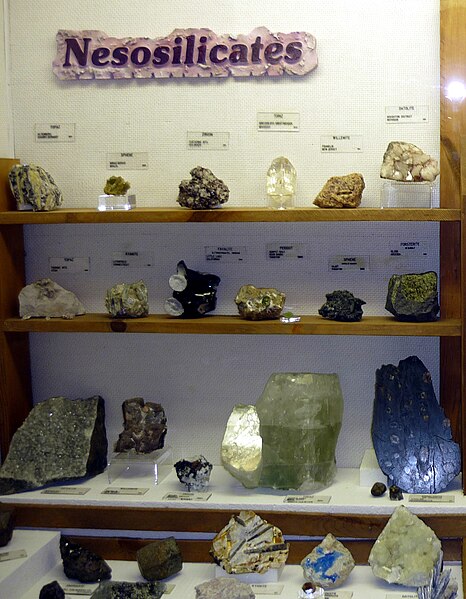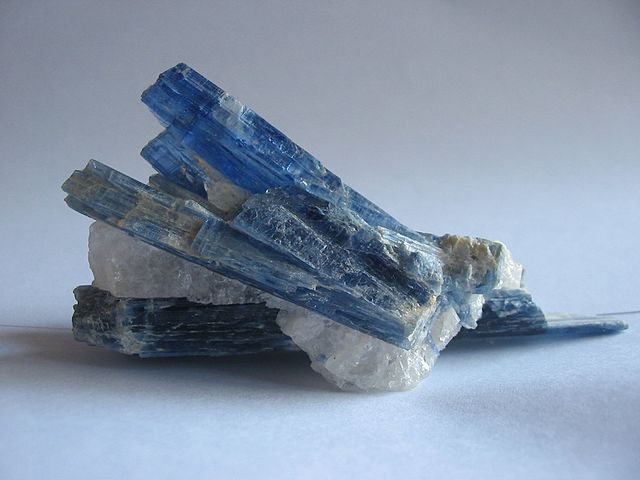Analcime (; from Ancient Greek ἀνάλκιμος (análkimos) 'not strong') or analcite is a white, gray, or colorless tectosilicate mineral. Analcime consists of hydrated sodium aluminium silicate in cubic crystalline form. Its chemical formula is NaAlSi2O6 · H2O. Minor amounts of potassium and calcium substitute for sodium. A silver-bearing synthetic variety also exists (Ag-analcite). Analcime is usually classified as a zeolite mineral, but structurally and chemically it is more similar to the feldspathoids. Analcime is not classified as an isometric crystal, as although the crystal structure appears to be isometric, it is usually off only by a fraction of an angle. However, there are truly isometric samples of the mineral, which makes its classification even more difficult. Due to the differences between the samples being too slight, there's no merit from having multiple species names, so as a result analcime is a common example for minerals occurring in multiple crystal systems and space groups. It was first described by French geologist Déodat de Dolomieu, who called it zéolithe dure, meaning hard zeolite. It was found in lava in Cyclops, Italy. The mineral is IMA approved, and had been grandfathered, meaning the name analcime is believed to refer to a valid species til this day.

Reddish crystals of analcime up to 1.8 cm in size on matrix
Silicate minerals are rock-forming minerals made up of silicate groups. They are the largest and most important class of minerals and make up approximately 90 percent of Earth's crust.
Lithium aluminium silicate mineral spodumene
Diatomaceous earth, a biogenic form of silica as viewed under a microscope. The imaged region measures approximately 1.13 by 0.69 mm.
Nesosilicate specimens at the Museum of Geology in South Dakota
Kyanite crystals (unknown scale)





